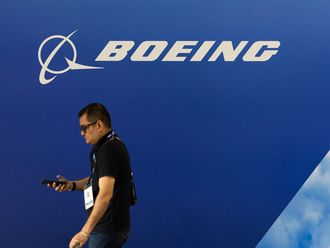Dubai: The cost of delivering Middle East crude oil to Asia, the world's busiest route for supertankers, gained for a third day as stronger demand for ships in West Africa drew vessels away.
Charter rates for very large crude carriers, or VLCCs, on the industry's benchmark route between Saudi Arabia and Japan rose 0.3 per cent to 47.5 Worldscale points, according to the London-based Baltic Exchange. Daily returns from the voyage fell 0.5 per cent to $8,594 (Dh31,560), paring a two-day climb of 11 per cent.
An oversupply of ships in the Middle East may shrink as owners send vessels to West Africa, where demand is rising, Dag Kilen and Frode Morkedal, analysts at Oslo-based investment bank RS Platou Markets, said in an emailed report yesterday. Hire rates advanced yesterday on routes connecting West Africa with the US and China.
There are 20 per cent more VLCCs than cargoes, according to a Bloomberg News survey of owners and brokers. The excess was 25 per cent on September 7.
Charter rates for VLCCs gained 1.6 per cent to 50.96 Worldscale points on the route between West Africa and China and increased 0.4 per cent to 47.69 points for voyages from West Africa to the US Gulf Coast. Rents for smaller suezmax tankers travelling from West Africa to US Atlantic destinations added 0.5 per cent to 67.67 points.
Worldscale points are a percentage of a nominal rate, or flat rate, for more than 320,000 specific routes. Flat rates for every voyage, quoted in US dollars a ton, are revised annually by the Worldscale Association in London to reflect changing fuel costs, port tariffs and exchange rates.
Calculating value
Each flat rate assessment gives owners and oil companies a starting point for negotiating hire rates without having to calculate the value of each deal from scratch.
The Baltic Dirty Tanker Index, a wider measure of crude-oil transportation costs, fell for a fourth day, sliding 0.6 per cent to 678 points, according to the exchange.












